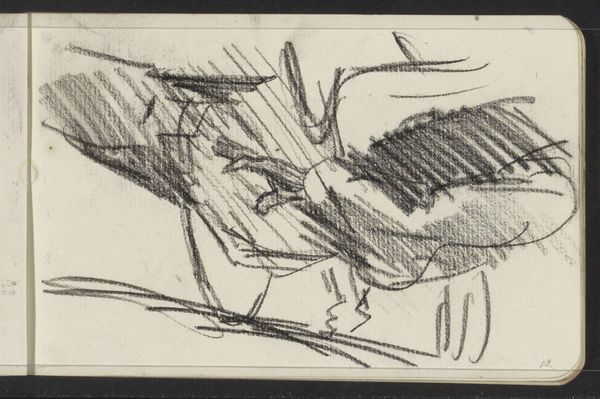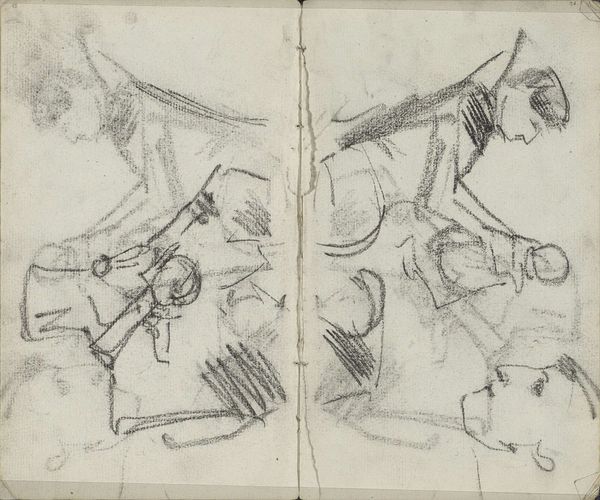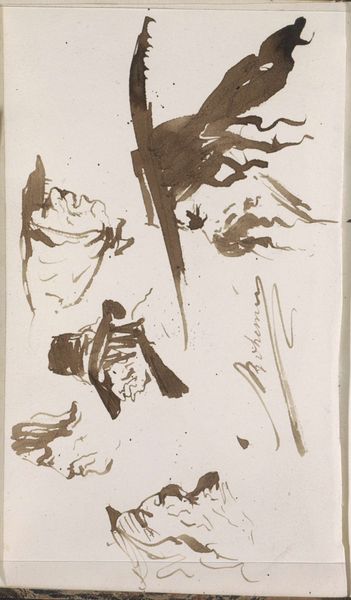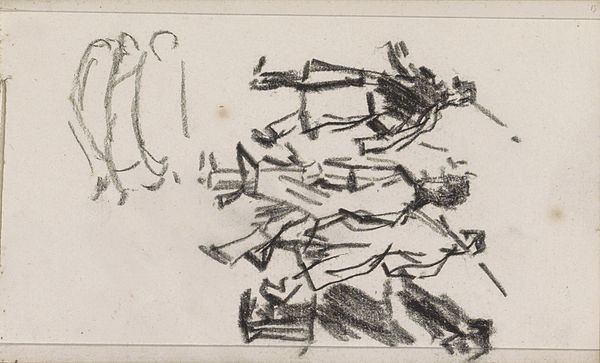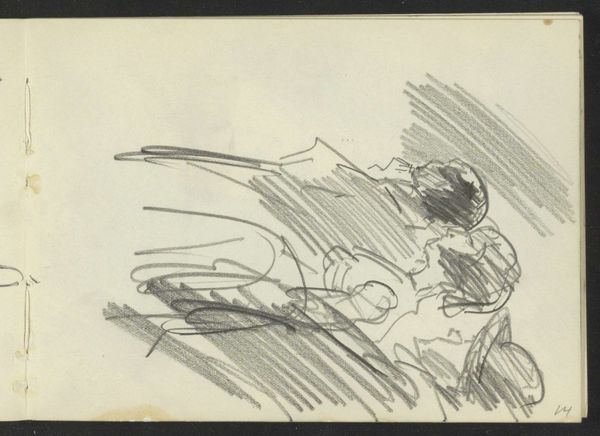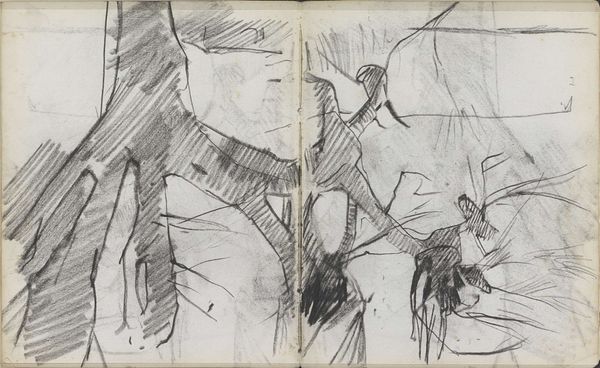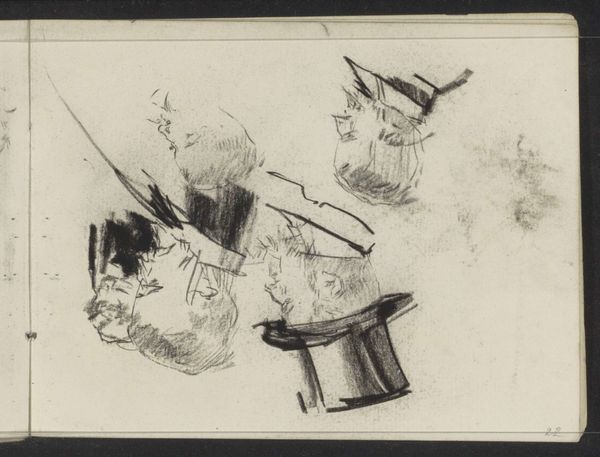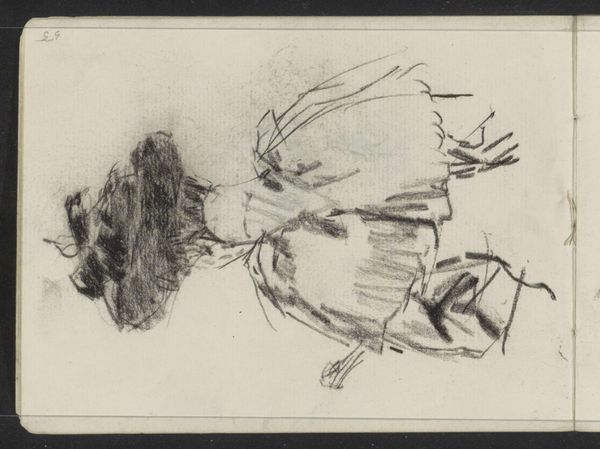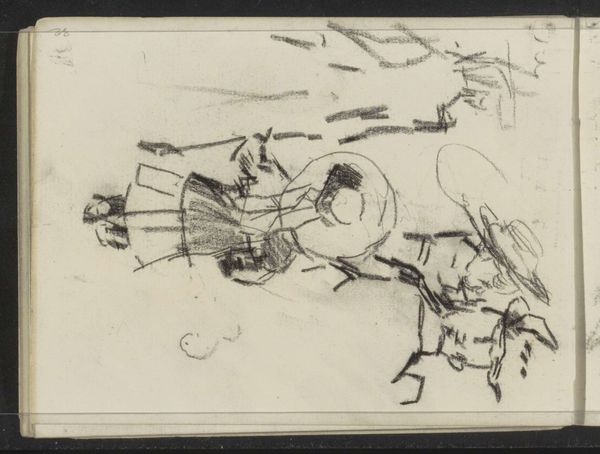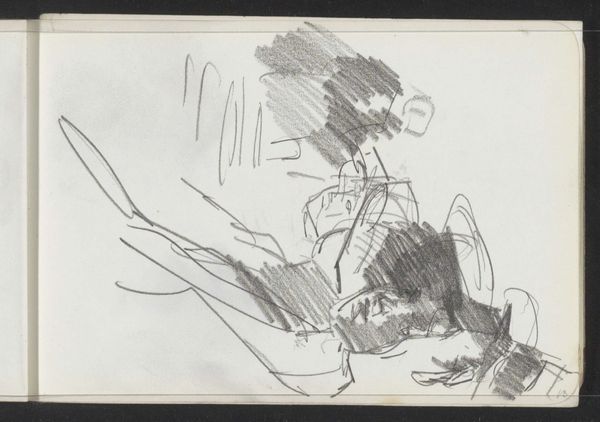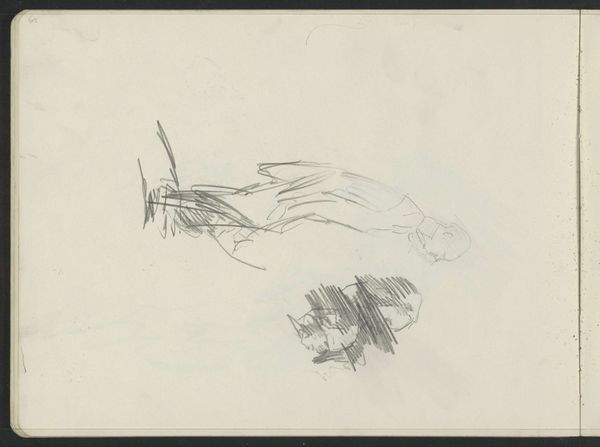
Copyright: Rijks Museum: Open Domain
Editor: This is "Standing Man, possibly next to a shoemaker," by Isaac Israels, dating from 1875-1934, currently housed at the Rijksmuseum. It's an ink drawing, and there’s something very immediate and personal about its sketchy style. What's your take on this, in terms of the social context of the time? Curator: Well, consider that Israels was working during a period of intense social change and burgeoning industrialization. This seemingly simple sketch becomes a commentary on labor, class, and the rapidly transforming urban landscape. Do you see how the subject seems both present and somewhat ghostly, captured in fleeting lines? Editor: Yes, it feels unfinished, like a snapshot of a moment. The 'shoemaker' detail is so ambiguous. Curator: Exactly. It begs the question: who are these anonymous figures inhabiting the margins of society? What kind of labor are they engaged in? How does Israels position them within a changing economy where traditional crafts are being challenged by new modes of production? Notice his apparent nonchalance which is loaded. Israels invites us to contemplate who is valued, who is seen and not seen. Editor: So it's less about the specific scene, and more about what it represents about that era and its values? The lack of detail almost abstracts the figures, making them symbolic. Curator: Precisely! Think about how art at this time was starting to challenge academic traditions. Artists like Israels were turning their attention to everyday life, capturing its fleeting moments, and, in doing so, prompting viewers to consider the social fabric and the lives of those often overlooked. What does this image suggest to you about issues of visibility and representation? Editor: It’s making me think about how art can draw attention to the working class, give them a presence and ask these socio-economical questions, even in what appears as a simple sketch. It seems like the act of sketching itself democratizes art making. Curator: Indeed! I think this unassuming sketch speaks volumes about the power of art to engage with social issues. The casual feel belies a complex network of ideas relating to social visibility. Editor: That’s a perspective I hadn't considered, seeing it as an active political commentary. Thanks!
Comments
No comments
Be the first to comment and join the conversation on the ultimate creative platform.
